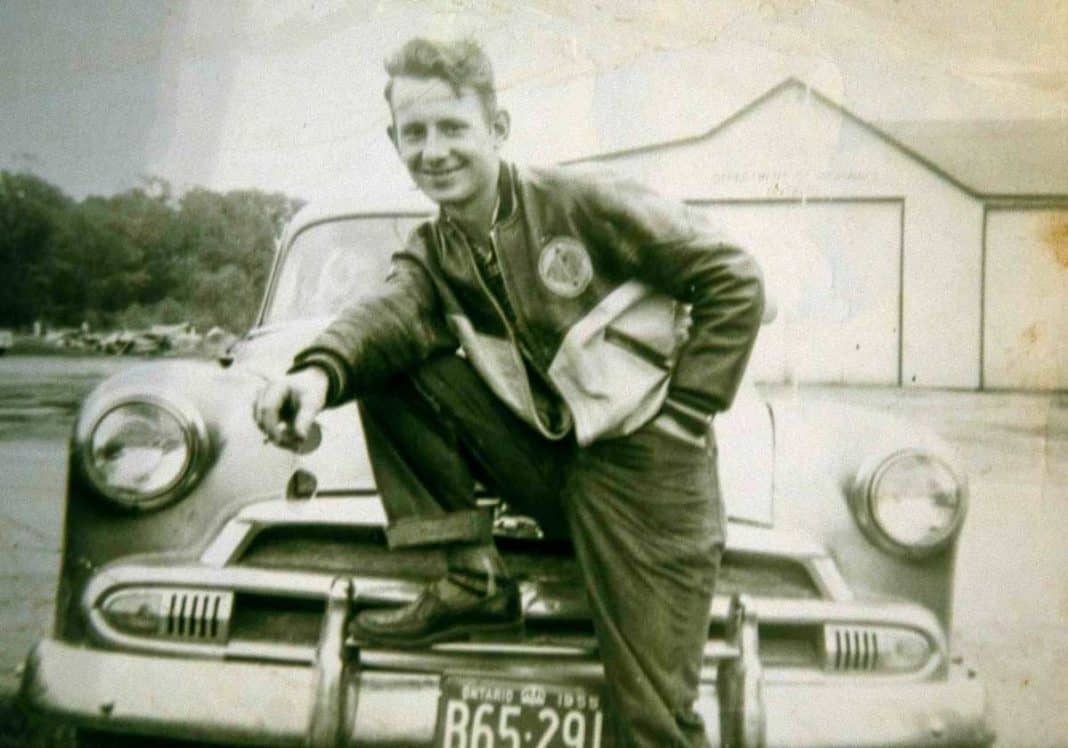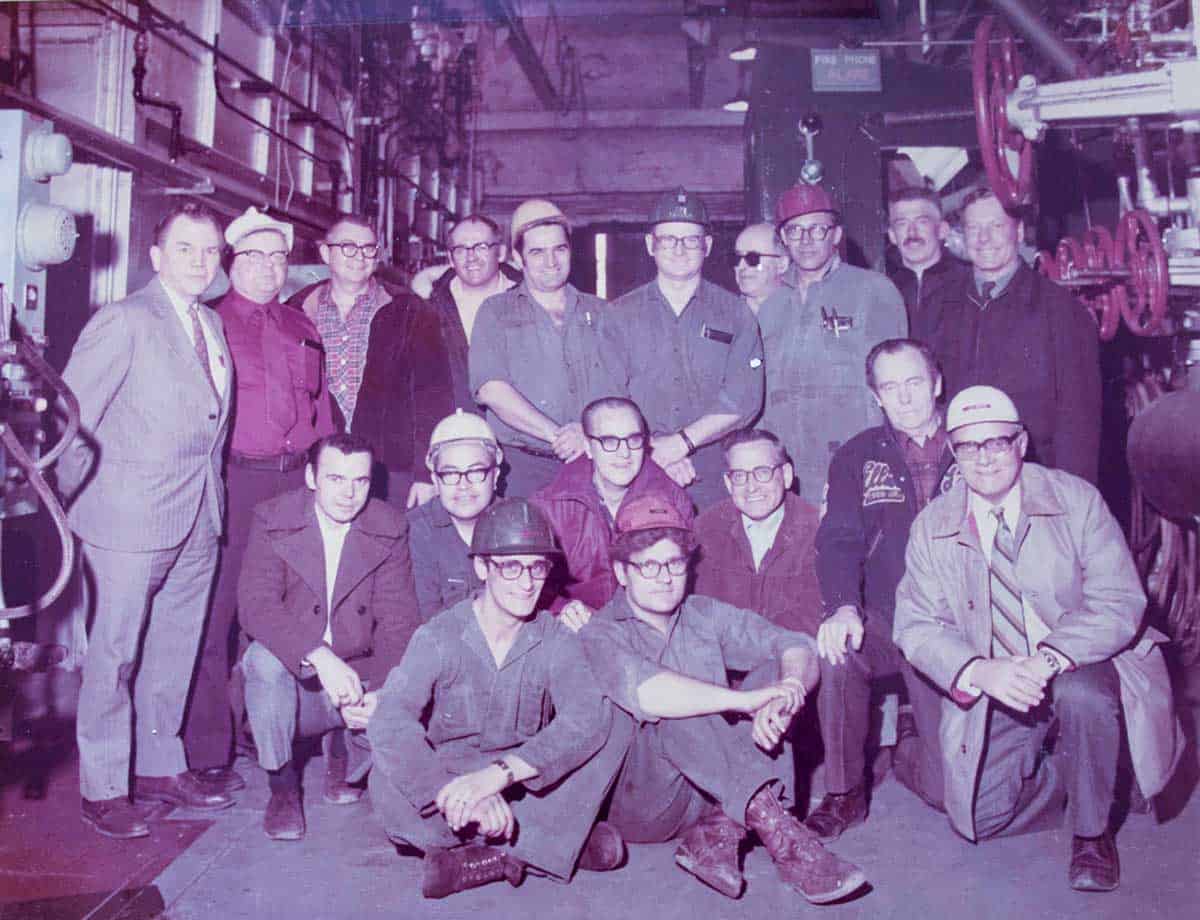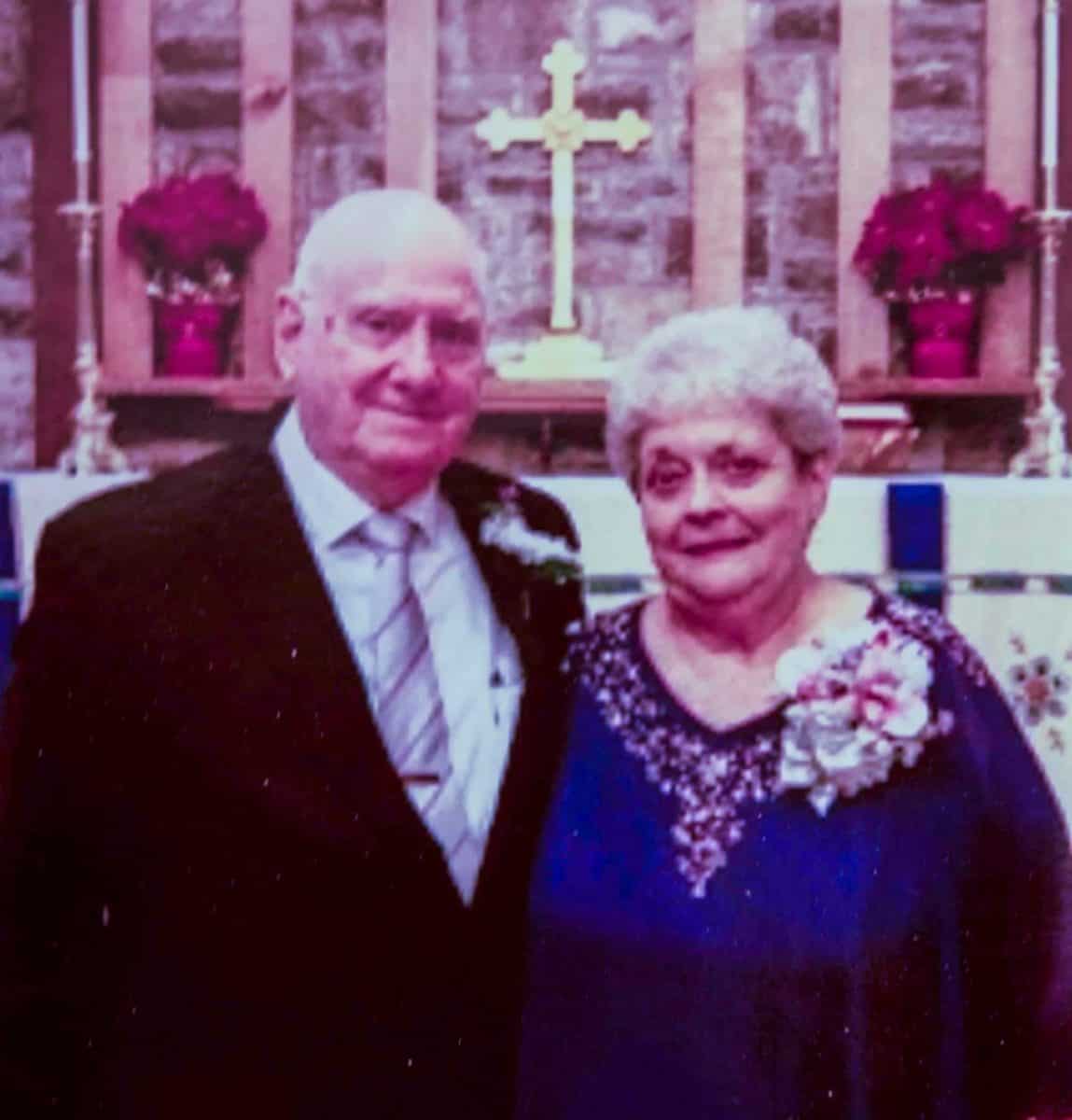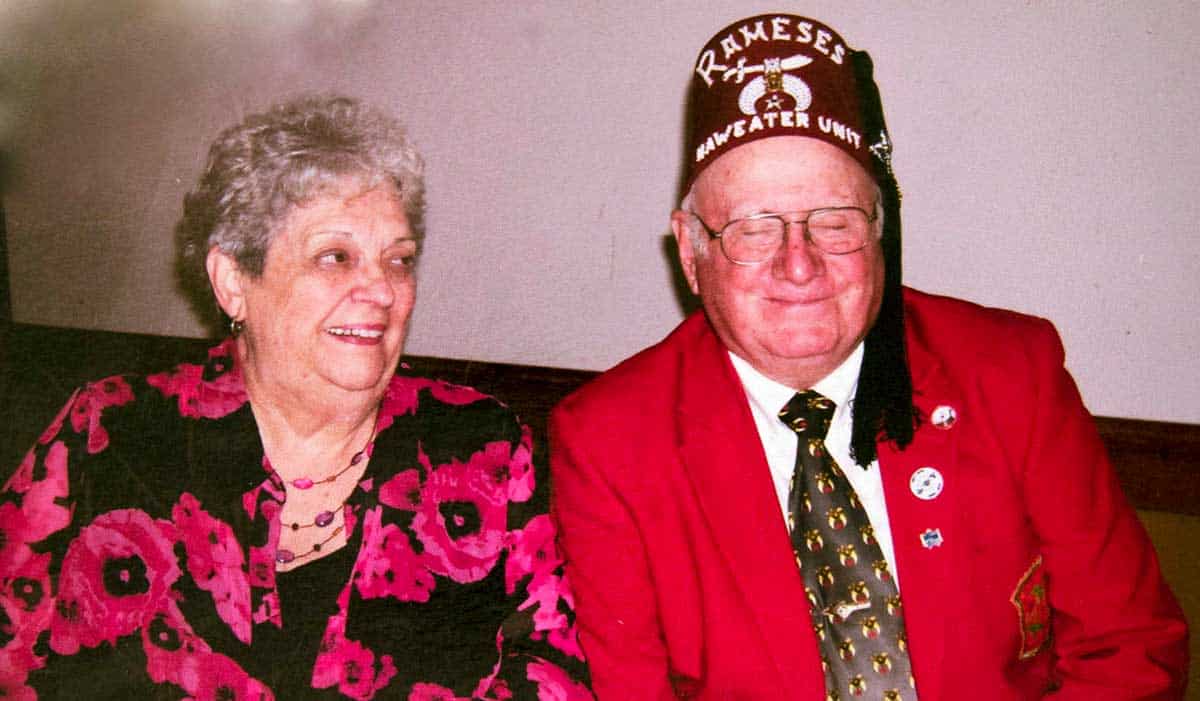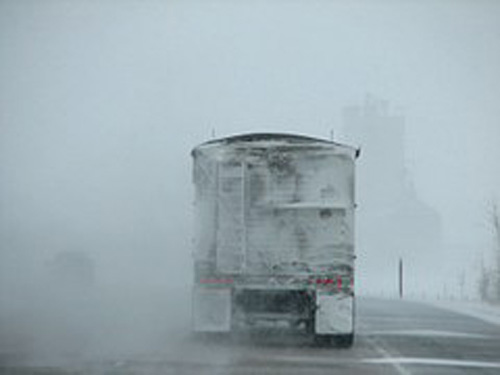Ted Taylor
These days, Ted Taylor, an unabashed Haweater, resides in Mindemoya where, as president of the local historical society and church warden of St. Francis of Assissi Anglican Church, he can share his keen love for the history of this island. “Right now, we have a special interest in the old Mindemoya schoolhouse, and we are hoping that, being just one year shy of a ‘heritage building’ classification, this edifice known to many Central Manitouliners as their public school, can be resurrected for its potential functionality and historic significance. We also have a historic interest in the graveyards of Central Manitoulin.”
Ted spent much of his early career making ice cream for Wagg’s Creamery and later, producing uranium in Elliot Lake, moving from worker to supervisor, then engineer (first class). He operated and monitored safety gear as well as the equipment used for mining this element so important to the energy and medical fields, among others. He volunteered for several community organizations as well.
Paternal grandparents were William and Edith Taylor. “My dad was eight when they came here to farm in the Kagawong area. Edith was a good cook and great bread baker. William farmed and worked for the Department of Highways where he erected road signs and fixed countless potholes. He was a wonderful gardener too. Uncle Percy ran the early school buses. A fellow named Chancy Berry had built about three of these early buses, mounting a cab on a truck frame.”
“Maternal grandparents are Fred and Daisy Pepper. Daisy had been married in England and had given birth to three children before her husband died. When she emigrated from England, she had to be a single lady, so her sister and her mother cared for her older children. In Saskatchewan, she married Fred Pepper and had triplets. The older children joined the family after the wedding. Daughter Mildred became my mother. Her nickname was ‘Mild Red’ as in mild red pepper. She married Dennis Aubrey Taylor of Manitoulin and had five children. Mildred’s sister Peggy married Richard Taylor (no relation), who built the stone church in Mindemoya.”
“I was the first-born, on November 7, 1936 with the help of Dr. R. B. McQuay in the Red Cross Hospital. Siblings are Cyril, Randy, Lois, ‘Alex’ and Denise. Dad worked for the Department of Lands and Forests, sitting in a lookout tower searching for forest fires. All tower occupants would communicate with each other and establish vector lines to pinpoint the smoke. They would have to walk there, bringing a pump to pull from the nearest water source. Sometimes they had to fill their canoe, strategically placed half-way, and pump to the fire from there.”
“My early memories are being with Grandfather Taylor on his farm just outside of Mindemoya where the Sean Tipper farm is now. That barn is still standing. I remember five little kittens in a box. When the cows were milked, a stream of milk would be aimed at the kittens. As a young tot, I used to love just sitting there and watching the action. I remember putting a harness on Sport, the family border collie. That day I decided to tie him to the pump. Grandfather found him there later, after I had forgotten about him.”
“Driving the tractor was a pre-school adventure too. Uncle Percy would jump on and off the wagon, pitching hay up with the fork. I was slowly driving the tractor with uncle holding down the clutch. When the wagon was full, uncle would drive it into the barn and start removing the hay. I would get the old mare tied to the single tree with a bowline knot. She would help pull off the hay, wait for it to be hooked by the mechanical ‘hay fork’ device and walk away with me guiding her, thus lifting the hay from the wagon bed. That’s also how we got the hay up to the mow where the hook would release it” when someone on the barn floor below would pull a trip rope attached to the hay fork and release the hay. The leverage was by means of a pulley high up in the barn’s roof and the hay fork’s rope passed over the pulley.
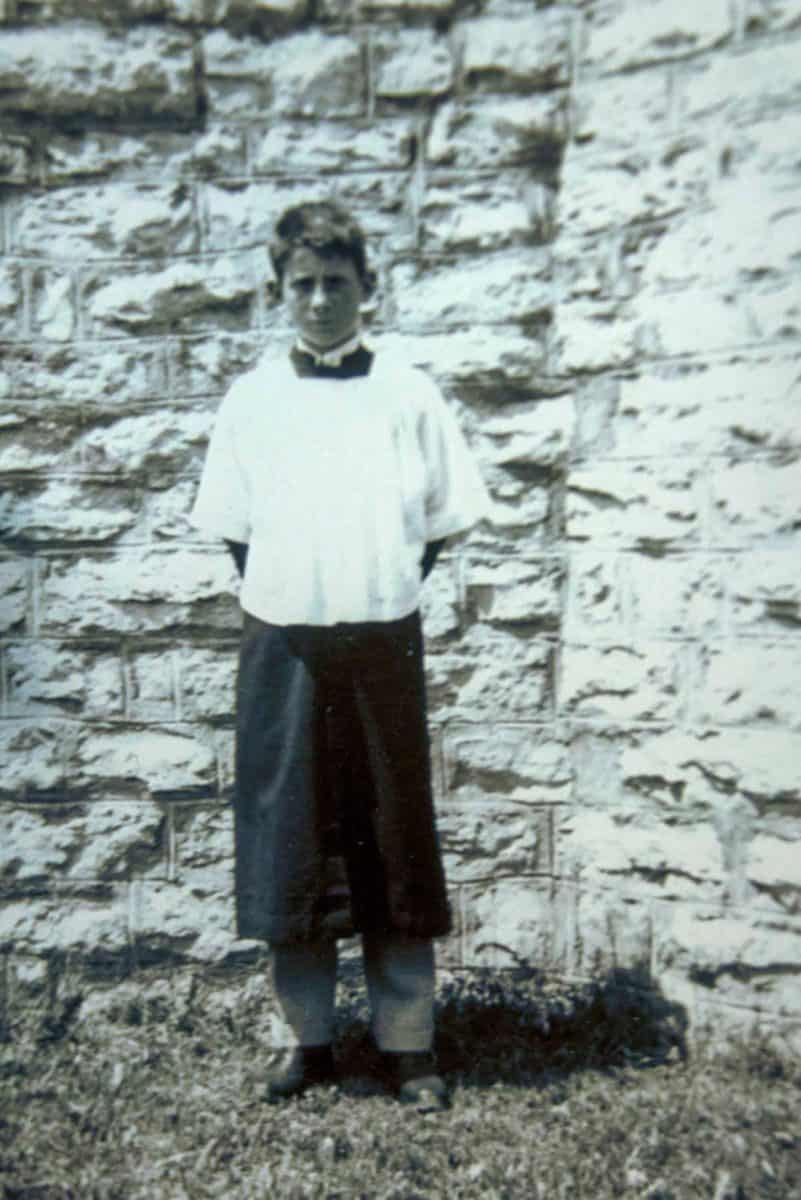
“In 1941, dad joined the army and mother, Cyril and I moved to Mindemoya to the white house beside the old hospital, so I could go to Grade 1 in the public school. I walked to and from the school and back. Mrs. Turnbull was my teacher. Mother was expecting little Randy, who was born in January of 1943. Dad was still doing basic training and he got embarkation leave to see his new son in March of 1943. He got to Little Current by train and then jumped on the mail bus, heading for Mindemoya. It snowed that day and the bus got stuck in Honora. Dad only had a two-day leave before shipping out, so he had to return to base without seeing us. Randy was three years when dad finally met him.”
“I also recall tightly clutching a quarter. Mother had tasked me to buy a can of Carnation milk for Randy’s bottle. The grocery store (Wagg’s Store) was where Jake’s is now. I was so worried I would lose it, but I didn’t. By June of 1943, mother was missing her family in Saskatchewan. Her father had died there, so she decided to move Cyril, Randy and me to that province. I went to Grade 2. My uncle Lloyd had a daughter in Grade 1 and he asked me to stay with them during the week so I could guide her. We each rode horseback seven kilometres to school with strict orders not to run the two horses. I followed that rule.”
“The government was paying one cent per gopher tail in the mid-1940s. Farmers were plagued with too many holes in their fields, holes a horse’s hoof easily found (leading to broken bones). I did this for a while, but I felt a bit uncomfortable doing it. By Christmas 1945, our father had come home from the war. He stopped in Mindemoya and then came for us by train. It was fun coming home on the train. The soot and ash from the steam engine inevitably found open windows, especially going around bends.”
“We came back to the white house in Mindemoya. Dad found work feeding mink and cleaning cages for Jim Burt, the bank manager. A little later, we traded the white house for a 100-acre farm across from the Missionary Church. By 1949, Dad had 350 acres. He was raising shorthorn cattle for beef, but we milked them too. We had a few pigs and chickens. In 1950, a little sister, Lois, was born. That year, the barn from town was moved to where the Gibson house is now. Our home became the log home there and the house in town was sold with one acre of land.”
Hockey was a favourite pastime for Ted. He played for the local Legion team as a 10-year-old and went on to the intermediate and senior levels, playing until he was 24. After Christmas, he played on natural ice for Mindemoya against teams from Providence Bay, Gore Bay, Little Current, Sheguiandah, Manitowaning and Wiky.
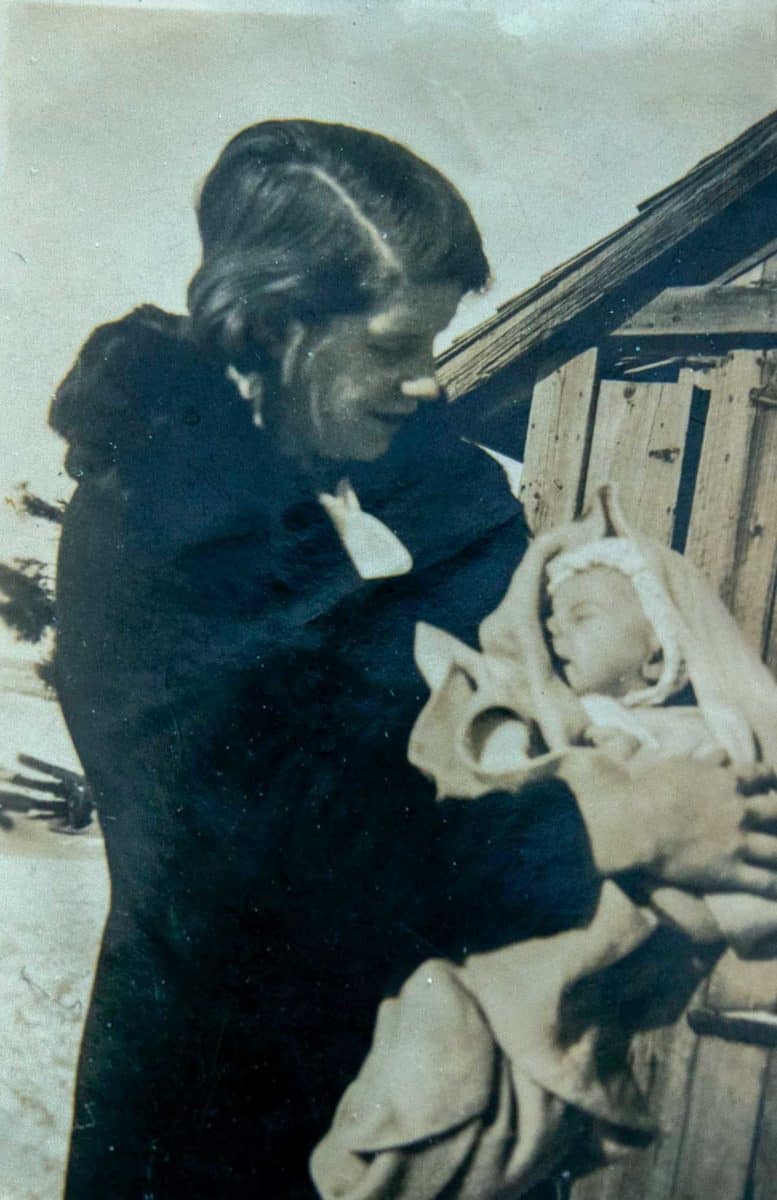
“After Grade 9, I worked on the farm and helped with the haying. The day following my 16th birthday, I applied for and got my driver’s licence. In the winter of 1953, I was cutting pulpwood and logs with my dad when I heard someone at Wagg’s Creamery was off sick. I applied for the job and wound up staying for 14 years. I pasteurized milk, made ice cream, butter, and graded chickens and eggs farmers brought in. I candled eggs too, two at a time. We processed up to 40 hogs each week. The meat was taken to Sudbury and the surrounding area. In my spare time, I delivered milk to various stores in town.”
“I was just 17 when we won the award for the best quality butter in Ontario! We would regularly send seven pounds of butter to Guelph for quality assessment and they made the determination. We had just replaced the old wooden churn with a new stainless-steel version. That award was quite an honour for Waggs and for us. Every summer, there was a rush for ice cream. We would be making a ton-and-a-half each week. Butter, eggs, sugar, gelatin and powdered milk were mixed. Each vat contained 3,000 lbs of the resulting custard. Over the next five days, that volume would be aerated and frozen into various flavours and containers.”
“I was in my early twenties when my parents decided to move to Elliot Lake. Dad was 57 and mum, 50. Dad had found work with the water treatment plant there.” Ted continued to work at Wagg’s and run the farm. That same year, Ted had stopped a puck with his ankle. It seemed to be a good time to quit hockey. “I was getting married, looking after cattle and sheep on the farm and working at the creamery.”
On September 16, 1960, Ted, 24, married his high school sweetheart Evelyn Spry, an RNA, trained in Sudbury. Evelyn had been one year behind him in school. She would work at the Red Cross hospital and help on the farm.
Over time, they had three children, Kathleen, Robert and Bradley. Today, Kathleen works at Jean Country in Espanola. Robert is an electrician in Elliot Lake and Bradley works for Ontario Hydro in their electrical department and he is based in Walkerton.
“In 1966, Dad sold part of the farm to the school board so they could build a new school (Central Manitoulin Public School). After a busy summer making ice cream, our family of four planned a trip to Vancouver to be with brother Randy and possibly find work there. I found out that Harry Roper at Rio Algom, a conglomerate of 11 uranium mines in Elliot Lake, was looking for a truck driver and janitor. I went for an interview and started the job two hours later, shutting down our trip west.”
After the Second World War, the USA had looked for uranium for defense purposes but in the 1960s there was a strong interest in uranium for peaceful uses, such as nuclear power generation with its reduced carbon footprint, and for medicine, to diagnose and treat cancer and other diseases. However, nuclear electric power generation does create waste products that must be dealt with.
“At Rio Algom, Uranium ore was ground to a fine beach sand texture. It was placed into a sulphuric acid steam bath. The uranium left the rock and remained in the water; the impurities sank to the base of the tank. The uranium was then removed from the water.”
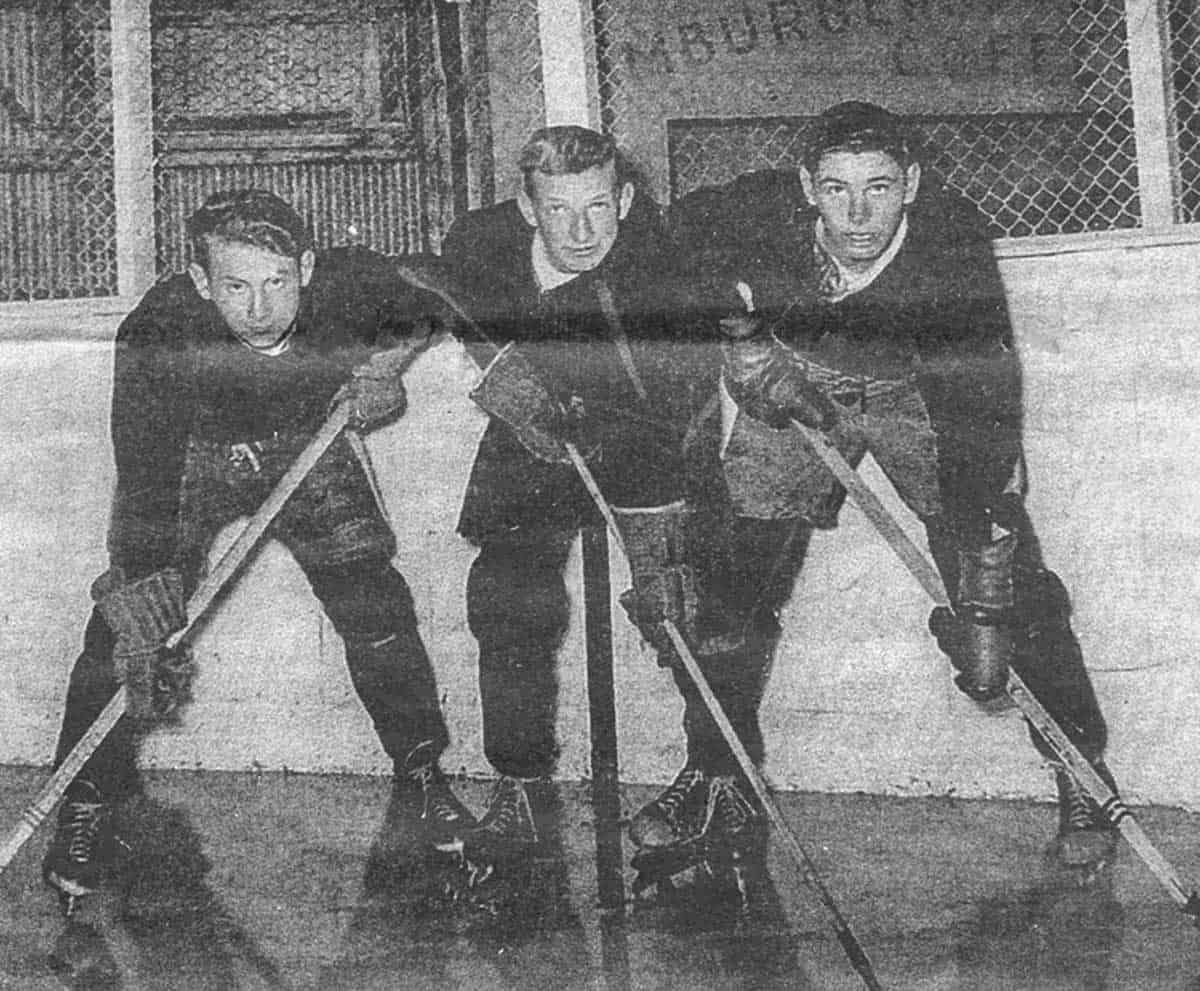
“Soon I was off to Toronto to begin my Fourth-Class Stationary Engineering Certificate. This would allow me to run the boiler and the refrigeration system, like the one I had run at Wagg’s, for the New Quirke Mine. After I wrote the Fourth-Class Stationary Engineering Certificate, I was transferred to the power plant where I operated 500 HP electric compressors for sinking the shaft at New Quirke in 1967. After that, it was running three boilers fed by 50 to 60 tons of coal every 24 hours. Later we were burning 8,000 gallons of bunker ‘C’ oil a day, at 250°F over three shifts, resulting in a liquid similar to that used as road asphalt.”
Ted wrote his Third-Class Stationary Engineering Certificate next. He went to night school to finish his high school, taking math, English and other related courses. He also got his Second-Class Engineering Certificate, which promoted him to shift engineer for his four-man group. In 1978 Ted wrote his final First-Class Stationary Engineering Certificate. “It took two tries to get this one.” Ted became the chief power engineer at the New Quirke Mine from the mid 1970s to 1990.
In 1982, Ted built a house in Mindemoya. “In 1985, the mine doubled its production. I supervised the transition as we added more machinery and more pipelines. I was asked to go to the Stanleigh Mine as the chief power engineer. By this time, I was ensuring a safe air supply for 500 men down in the refuge station 3,500 to 4,000 ft down in the mine. The men were less exposed to radiation while in the refuge.”
“Finally, on September 30, 1996, we turned out the lights, locked the gate and ended uranium mining in Elliot Lake. Northern Saskatchewan was getting 50 lbs of uranium per ton from their Uranium City mines, which dwarfed our two to three-pound yield per ton. That day, I retired. After Christmas, we locked our Elliot Lake house and both Ev and I headed our truck and trailer to Sault Ste. Marie and the I-75 to Florida. It was the first time in a long time that I wasn’t on call.”
“By now, our children had their own lives. In 1997, we moved to our cottage which we had built on Big Lake in 1990. We expanded it into a home because our first house on the island had been sold.” Ted joined the fire department in Sandfield as a volunteer. “I drove trucks for them and did maintenance for Ron Tann on the township trucks and equipment. I quit when I got on council.”
“I served two terms for Central Manitoulin, representing Sandfield. We worked to get sidewalks and streetlights put in. The fire department was upgraded, and a new truck purchased.” Ted also joined the Central Manitoulin Historical Society. For the last 10 years, he has been its president. “They have some farm machinery on display, and as mentioned, they have an interest in rescuing the school and maintaining Central Manitoulin’s burial sites.”
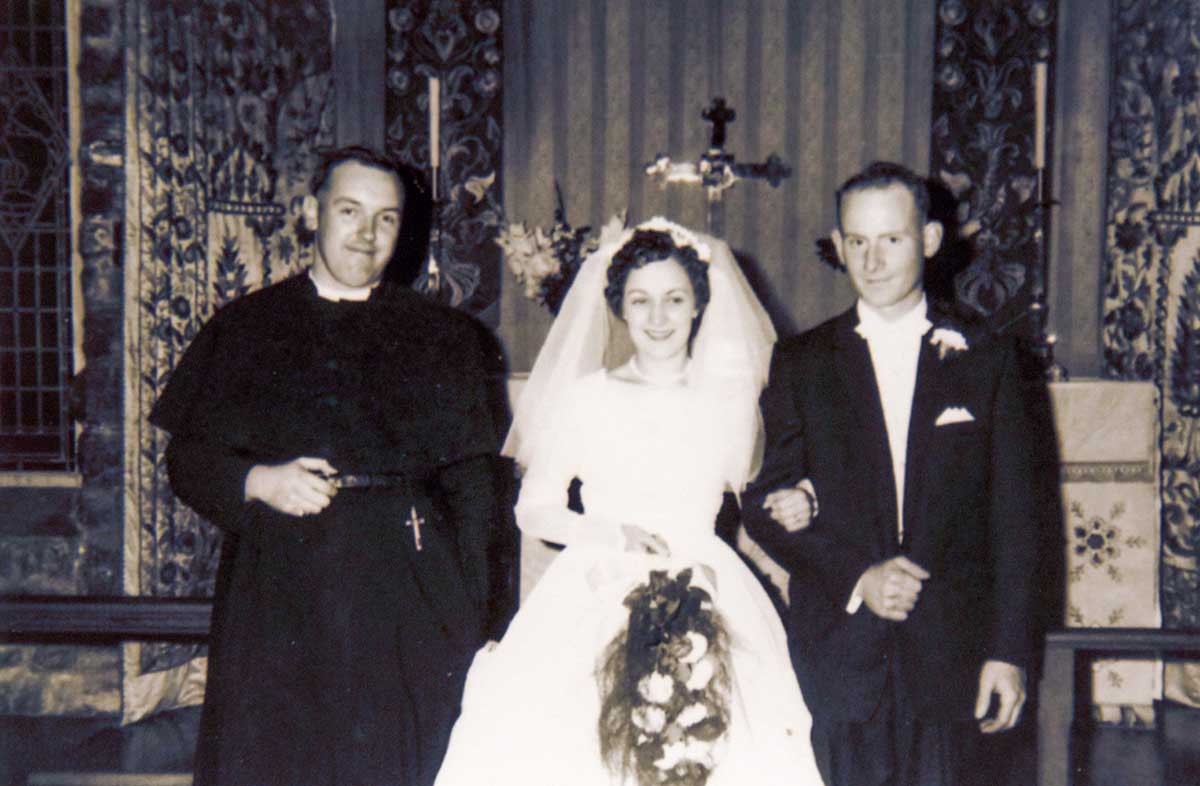
Ted is also the church warden for St. Francis of Assisi, the beautiful Anglican stone church to the west end of Mindemoya, built by his uncle. He is chair of maintenance for the church which includes grass cutting and snow removal. Since 1958, for 62 tears, Ted has been a member of the Masonic Lodge in Little Current. He is also a member of the Haweaters Manitoulin Shriners unit too. In 2013, Ted was proclaimed citizen of the year for his community contributions.
“Ev and I did some travelling to Holland, Ireland and Scotland. We found the wartime cemetery where both Ev’s cousin and Doug Wagg were buried. At the time, Doug’s father owned the white house that sits across from me here.”
Sadly, Ev passed away with a heart attack in 2005. In 2014, Ted purchased this home he lives in now. He met Dorothy Gordon and they began a friendship. Dorothy’s son Jeremy builds housing units he rents to seniors in Mindemoya.
On December 29, 2015, before Reverend Canon Bain Peever, Ted and Dorothy tied the knot in the Anglican Church. This ceremony was close to the last service held by the Canon. Regretfully, Dorothy died a few months ago in 2020. “She had COPD and breathing was difficult for her.”
“Most of my siblings are retired now. Lois was a legal secretary. Cyril was a member of the military police and later a personal guard. Randy had worked for Consolidated Pulp and Paper in British Columbia. He has died. Denise still works for charity groups in Ottawa.”
“My fondest memories? I boast about my six grandchildren and two great-grandchildren. In addition, I enjoyed operating the big machinery, the boilers, and compressors, driving transports and mining uranium in Elliot Lake. Hunting deer and moose from age 16 was enjoyable, but it was more about the camaraderie than harvesting meat. Now, most of my hunting partners have gone. Ice fishing with my son Robert in Elliot Lake also brings warm memories.”
“Favourite pet? Bess, my saddle horse on the farm. We named her after Queen Elizabeth because she was born in 1952, the year the Queen was crowned. I raised her from a colt and used to jump on her back to take the cows to the field after milking and return them again in the late afternoon.”
“Favourite radio show? The Happy Gang which always played ‘You are my Sunshine’ and listening to the war news, trying to figure out how our father was doing over there.”
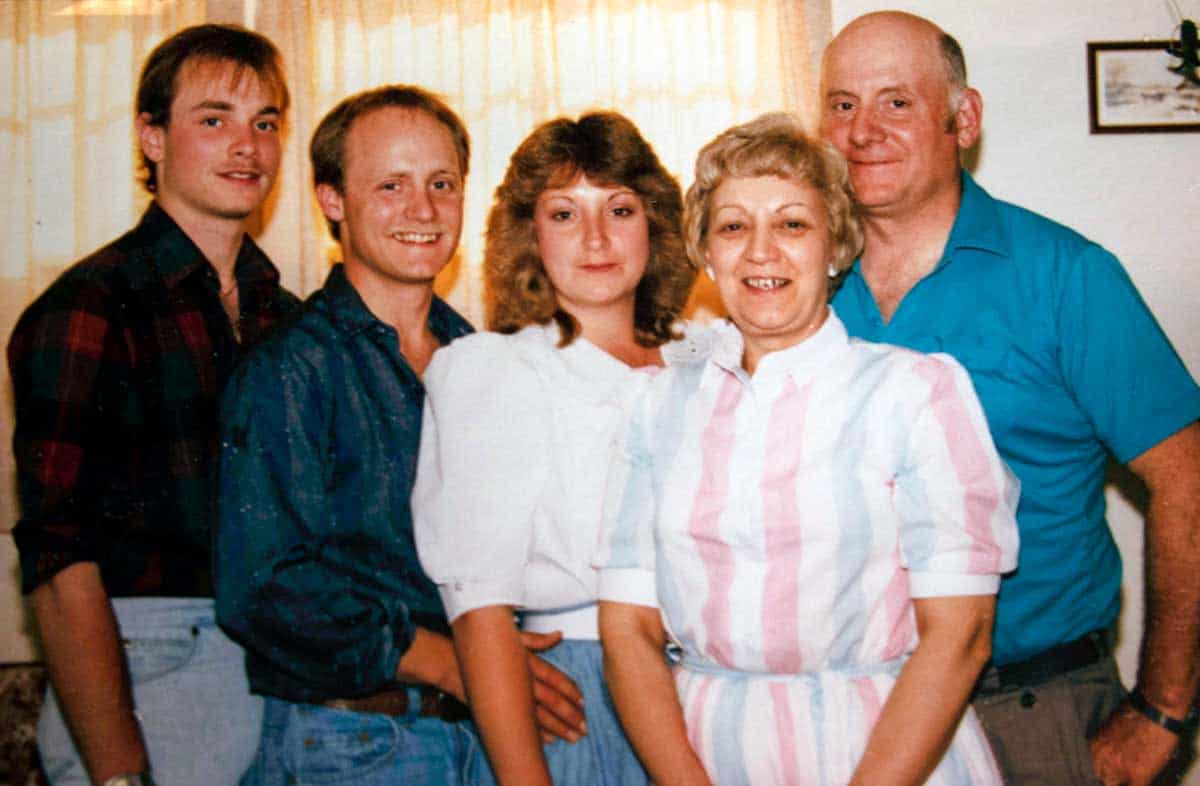
“My strengths? People say I’m good at building homes and fixing big machinery.” Between Wagg’s and Rio Algom Mines, Ted has spent a solid 44 years of non-stop time, working.
“Regrets? At one time I wanted a bigger farm, and I might have stayed in high school longer to become a large animal veterinarian.”
“What would I still like to do? Go back to England and look up more of my roots.”
“What am I most afraid of? Nothing really. I am well and I have good family support.”
Any new issues due to COVID? “Zoom is changing the way we communicate and where we work from. It will be nice to get the family together again, post COVID.”
“Was there someone I admired? Hewey Lochead, the manager at Wagg’s. He was a good person. My dad and grandfather too; they took the time to show me the little things, like how to loosen your grip on the hay fork. Uncle Archie Symes too. He was a capable farmer and rancher; he was good to me.”
“Recipe for happiness? Give and take, co-operate, keep an open mind, be honest and fair.”
“Did I realize an early dream during my career? My success was not based on a vision or a plan; it was serendipity.”
“My first wife was always infatuated with Prince Edward Island. We travelled three times to PEI, and she could feel the strong connection with Manitoulin. She saw Anne of Green Gables and the island culture. Here too, all slows down when you cross that bridge. We spent four winters in Florida, but I don’t miss it either. This is home; this is where our family lives. The seasons have much to offer. Spring brings maple syrup, July and August meant ice cream, lots of it. The fall brings out the hunters, and winters host ice fishing and snowmobiling. We came right back here after 30 years away. There really wasn’t another option. Manitoulin is where it’s at for me!”
The whole crew at Elliot Lake with Ted kneeling, far right. Ted gives the Right Honourable Elizabeth Dowdeswell, lieutenant governor of Ontario, a tour of the Mindemoya Pioneer Museum in 2016.

